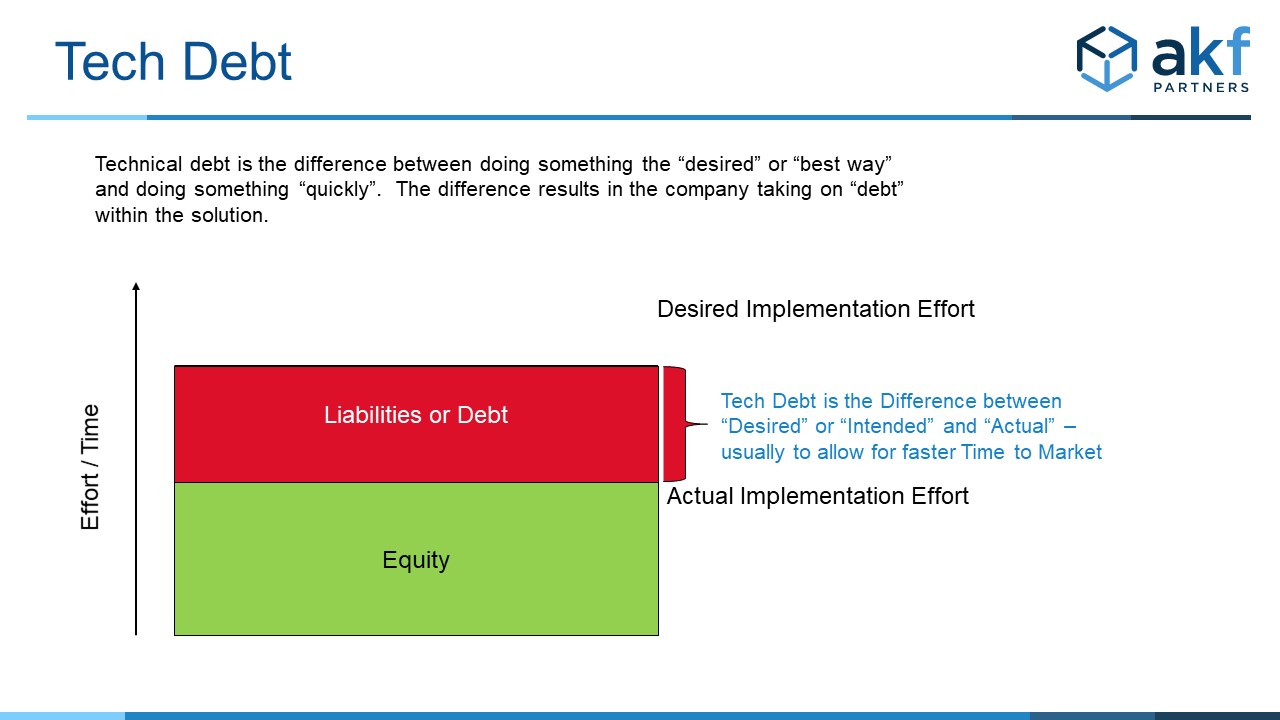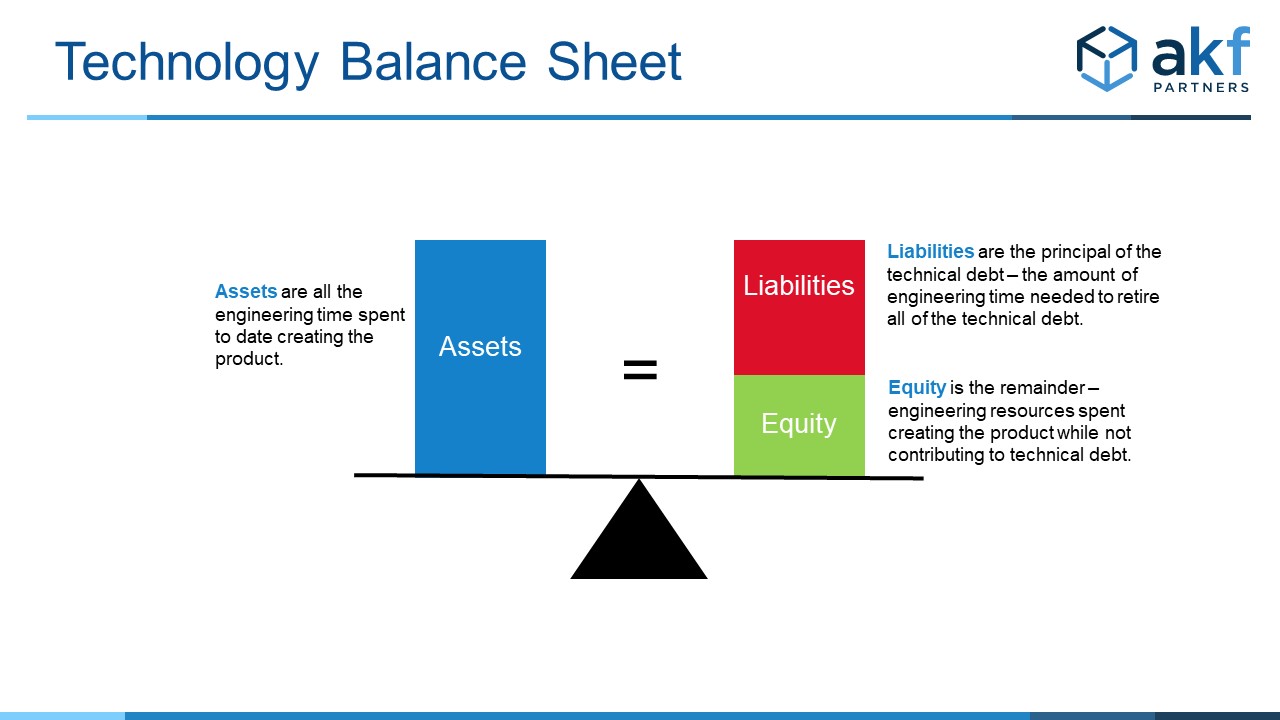
For over a decade, AKF has been on a number of engagements where we have seen technology organizations put off a large portion of engineering effort wrangling with technical debt. Technical due diligence, as laid out in Technology Due Diligence Checklist, should help identify the amount of technical debt and quantify the amount of engineering resources dedicated to servicing the debt.
What is Technical Debt?
Technical debt is the difference between doing something the desired or best way and doing something quickly. Technical debt is a conscious choice, made knowingly, and with commission to take a shortcut in the technology arena – the delta between the desired or intended way and quicker way. The shortcut is usually taken for time to market reasons and is a sound business decision within reason.

Is Technical Debt Bad?
Technical debt is analogous in many ways to financial debt – a complete lack of it probably means missed business opportunities while an excess means disaster around the corner. Just like financial debt, technical debt is not necessarily bad.
Accruing some debt allows the technology organization to release a minimal viable product to customers, just as some financial debt allows a company to start new investments earlier than capital growth would allow.
Too little debt can result in a product late to market in a competitive environment and too much debt can choke business innovation and cause availability and scalability issues later in life. Tech debt becomes bad when the engineering organization can no longer service that debt.
Technical Debt Maintenance
Similar to financial debt, technical debt must be serviced, and it is serviced by the efforts of the engineering team. A failure to service technical debt will result in high-interest payments as seen by slowing time to market for new product initiatives post-investment.
Our experience indicates that most companies should expect to spend 12% to 25% of engineering effort on servicing technical debt. Whether that resource allocation keeps the debt static, reduces it, or allows it to grow depends upon the amount of technical debt and also influences the level of spend. It is easy to see how a company delinquent in servicing their technical debt will have to increase the resource allocation to deal with it, reducing resources for product innovation and market responsiveness.

Technical Debt Takeaways:
Choosing to take on tech debt by delaying attention to address technical issues allows greater resources to be focused on higher priority endeavors
The absence of technical debt probably means missed business opportunities – use technical debt as a tool to best meet the needs of the business
Excessive technical debt will cause availability and scalability issues, and can choke business innovation (too much engineering time dealing with debt rather than focusing on the product)
The interest of tech debt is the difficulty or increased level of effort in modifying something in subsequent releases
The principal of technical debt is the difference between desired and actual quality or features in a service or product
Technology resources to continually service technical debt should be clearly planned in product road maps - 12 to 25% is suggested
AKF’s Technical Due Diligence can discover a team’s ability to quantify the amount of debt accrued and the engineering effort to service the debt. Contact us, we can help!